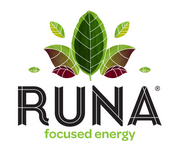
Editor’s Note:
It’s fraught with controversy, but the latest in certifications — which have in the past decade ranged from carbon impact statements to recycled content, from Organic to Fair Trade to Kosher and Gluten-Free — is non-GMO (Genetically Modified Organisms).
To date, uncertainty about the effects of the use of GMOs has been a strong bulwark against government regulation, and companies ranging from Monsanto to PepsiCo have fed enough cash into the political machine to hold off most attempts at citizen action (see: Prop. 37 in California last year).
But that doesn’t mean that non-GMO labeling isn’t becoming a force in the beverage world, most prominently because Whole Foods has taken the issue under its corporate wings and announced plans to make labeling a part of its merchandising approach in the years to come. Combine that with a rising tide of social and consumer activism and, regardless of regulation, the non-GMO label is becoming a touchpoint for companies that want to move product.
There are some problems with non-GMO certification, however: looming largest is that there’s currently only one active certification organization, the Non-GMO Project, and an increasing amount of demand. There may soon be others on the way, as MetaBrand founder Eric Schnell recently shared that he is looking to establish a non-GMO supply chain certification method. But until competition arrives for the Non-GMO Project, it’s important to understand the composition of the certification playing field.
Runa co-founder and co-CEO Dan MacCombie recently volunteered to help BevNET readers understand some of the work involved in the process, as his company found it to be fraught with speed bumps.
“Mistakes will definitely be made, and at the very least I hope you can learn from our experience,” MacCombie told BevNET as his reasoning for penning the following column for us. “If you hit any walls that we already climbed or avoided, I’m happy to try to help you work your way through them. That’s what karma’s all about, right?”
Here’s his story.
Seems that these days, everybody has an opinion on Genetically Modified Organisms – otherwise known as GMOs. Some say the controversy is overblown and that GMOs are perfectly safe, while others say they’re the latest incarnation of all that is wrong with America. Many are simply confused or don’t feel like they have enough information to make an educated decision. For many, that’s the point: it’s about the right to know what’s in your food. No matter what, the natural foods industry is making an inexorable march towards labeling the GMO content in products. From the looks of things, such as the recent state of GMO labeling initiatives, federal and state regulations may not be too far behind.

First and foremost: What’s the big deal? The biggest issue activists argue is the fact that there isn’t nearly enough long-term testing or data to show definitively how genetically modified material affects humans. In the US (unlike in other countries), the burden of proof is on those who think that something is harmful; before someone can prove harm, new methods, chemicals, and ingredients are let through. For all we know, GMOs may be perfectly safe – but we don’t know conclusively. Still, GMOs have been in the food chain for 20 years, and the American Medical Association could not find any link between GMOs and adverse health effects. Other articles have pointed to the rigor of the allergen monitoring systems, and that, despite needed improvements, are sufficiently safe. Nonetheless, many Americans still believe that GMO’s cause allergies or cancer – 37% in a recent poll, in fact.
Beyond that, there is pretty clear and compelling proof that GMOs designed to be the hardiest things around can have pretty large impacts on ecosystems in ways we can’t control. When you add in the fact that large producers of GMO seed frequently sue farmers who save seeds and has won the right to sue those whose crops got contaminated with GMO seeds, it’s clear that trouble’s a brewin’.
Customers, for one, are starting to care. Numerous retailers have pointed to rising customer demand for GMO-free products. Many natural foods co-ops won’t allow any products containing GMOs or risky ingredients (such as corn that’s not certified Non-GMO) on their shelves due to their members’ demands. Ballot initiatives requiring that products be labeled as having GMOs or not came very close to passing in the last election in California, and another proposition is on the ballot for November in Washington. Many states have demanded the federal government take action to create one national set of laws rather than a state-by-state patchwork that would be a compliance nightmare. As such, bigger retailers such as Whole Foods have begun to take notice and act. They recently announced that all products must be either be certified organic, certified GMO-free, or labeled (in-store) as containing GMOs by 2018. In short, this issue affects everyone.
Because of all this and more, whether it’s for ethical or commercial reasons, lots of companies are thinking hard about getting that GMO-free label.
So, say you decided that it’s worth it to get a third-party certification, and that Organic certification isn’t going to work for you – or if USDA Organic isn’t enough for your discerning retail partners, as is the case for many of them. First, make sure you have a compelling reason to go non-GMO, because it’s going to be a bit of a slog. Either you believe in the cause, you think customers have a right to know, or you simply see the writing on the wall. Those are some of a number of good reasons, but make sure you have something solid that you can explain to yourself and your team. Now, it’s time to prepare yourself for the process.

It turned out that we were, unsurprisingly for a startup, being very optimistic. The whole process ended up taking 8 months for a number of reasons. Amongst other things, as we only found out a few months in, the Non-GMO Project (and its certifying body, Food Chain Global Advisors or FCGA) will categorically not accept any citric acid manufactured in the US. Nor any citric acid made from corn. Period. The supplier we’d turned to previously for non-GMO citric acid turned out to be making completely false statements, as we learned when they couldn’t provide documentation that there was a clear segregation process preventing any GMOs in the supply chain. Most shelf-stable beverages require citric acid. Beyond that, many of our flavors proved to be unacceptable. Being organic compliant isn’t enough. Some of the sub-sub-ingredients (such as the maltodextrin used as the base for a flavoring in a mix of flavorings we used as one component in one product) were made with an ethanol that we couldn’t prove beyond a doubt to be GMO-free. Other ingredients were involved in a lengthy, jargon-fueled back and forth.
In other words, there was a level of rigor and complication involved that we didn’t exactly expect when we signed up. I actually only noticed that our products weren’t a slam dunk for certification when I e-mailed our account manager 2 months after initial submission to ask what was up. From there, we went into high gear to get things going.
The first thing was to dig through the database system and go through all the different journal entries, dissociated requests, and figure out which ingredients were problematic. I ultimately developed a project-management system of my own that included a spreadsheet tracker and a bevvy of email and calendar reminders. Once we figured out the approximately 30 ingredients that were flagged with questions or concerns, we had to figure out which ones just needed more info, and which might have to be adjusted. Then came the chase of going back and forth (with the aid of our consultants at MetaBrand) to track down ingredient statements. When these arrived we were surprised to learn a few things, such as the aforementioned unacceptable flavors and citric acid that we had to change, as well as the sheer number of forms and statements from manufacturers that we had to track down. Ultimately a few hundred emails were exchanged and many dozen documents had to be uploaded. It was challenging because multiple times we thought we were done, only to have significant requests for further information, which disappointed the suppliers who’d already jumped through hoops to provide information that they either didn’t have or weren’t comfortable sharing. We had to change four major ingredients, including tracking down a Belgian citric acid purveyor – but fortunately all those ingredient options fit our quality and cost needs. We also were extremely lucky that we had enough time to adjust that before an upcoming co-packing run; we’d (very) optimistically thought that we’d be well done by then and had gotten a variance from FCGA that allowed us to print those labels due to long lead times.
Ultimately, every single one of Runa’s products was certified. That said, we didn’t manage our expectations properly, and almost got ourselves into some sticky situations thinking that we were in the clear. All in all, it was worth the effort, because I believe in the ecological problems of GMO’s and we want to meet the demands of our retailers and customers.
But, as I’ve dug more into this, my views on the issue have certainly changed. Some of the language put out there by individuals or other groups besides the Non-GMO project border on hysteria, or quackery. The issue is that we don’t know anything, but some writers and advocates behave like they have all the answers, or that the lack of information is hiding some secret or sinister cause. I also felt, at times, like the whole thing bordered on the absurd, such as the whole citric acid issue, or the need to eliminate certain ingredients because we couldn’t prove beyond a doubt that absolutely every step in the production process was tested and guaranteed to ensure there wasn’t a chance of any GMO’s having ever entered the process. The stringency they expect in some of the supply chain requirements felt over-the-top. To use the citric acid example, I doubt that if many customers understood that citric acid has no (potentially allergenic) proteins nor genetic material, and that organic products can’t use GMO’s, they would mind beverages containing organic corn-based citric acid. These are just some of the examples of what I felt are the areas that need more consideration and collaboration in the Non-GMO certification process.
All in all, through this process I’ve learned more about the food system and the complexity of product formulation than I ever thought possible as a non-expert, and overall it was a good learning experience. But, it’s not for everyone. Some companies may be OK with Whole Foods labeling their products as having GMOs, and some may even take a moral stance against labeling – as many of the larger food and beverage companies have. No matter what, it’s a decision each and every company will have to make, and it’s best to go into it as informed as possible – and, working together, companies, retailers, and consumers can use this process as an example for how they can make meaningful changes to improve the impact of their supply chains, and of the foods and beverages people enjoy every day.